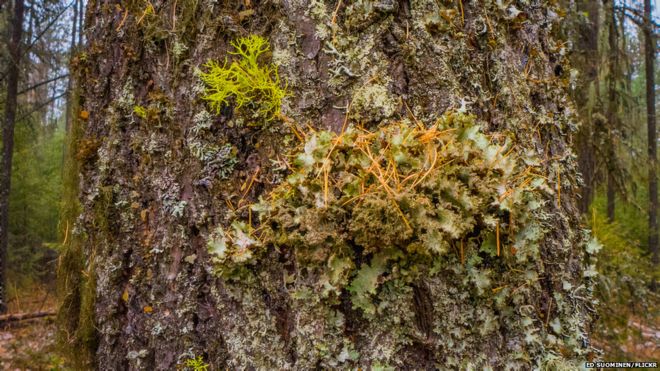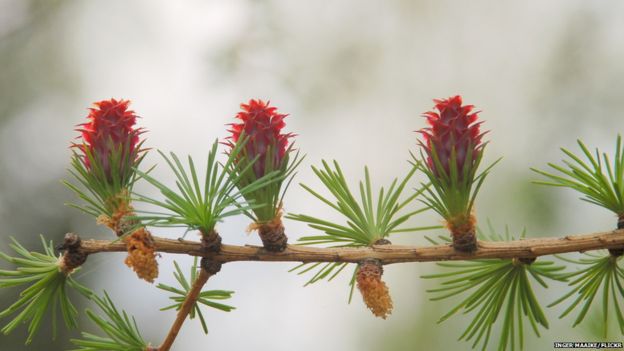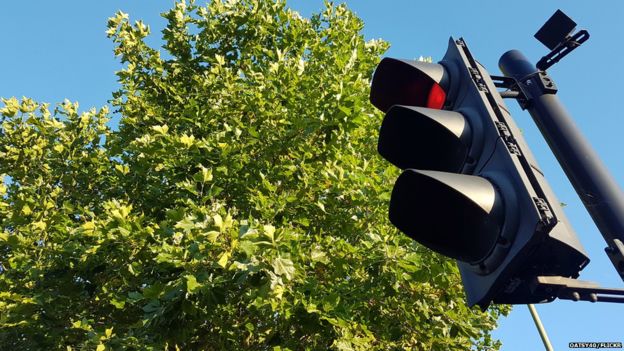
Scientists say trees have a role to play in combating noise pollution in urban environments and have identified the best species for the job.
The larch was found to be the most effective tree when it comes to absorbing noise with its bark.
The conifer was the most effective out of 13 tree species in a laboratory-based sound absorption test.
The researchers say the findings can help urban planners use trees for noise control.
The results have been published in the Applied Acoustics journal.
The study assessed 76 samples from 13 tree species that displayed a variety of different bark characteristics.
Sound ‘silencer’
Co-author Jian Kang, from University College London (UCL), said: “Beside emphasising the effects of vision and shade, urban greening should be considered as well to achieve noise reduction during propagation.”

He told BBC News: “Using plants as a potential ‘silencer’ of urban noise could combine environmental protection and landscape business.”
The samples were selected by using a range of criteria, including bark thickness, tree age and trunk diameter.
Disks of the trunks were collected from recently felled trees.
“The main goal was to have a sufficient variety of species, including broadleaved and coniferous,” Prof Kang observed.
In the laboratory tests, the team tested species that were often found in urban areas, such as cherry, pine, beech, willow, poplar and alder trees.
Comfort of conifers
The team found that the sample of larch was the most effective species, while conifers acted more effectively when it came to absorbing sound than broadleaved trees.

“The influence factors on noise reduction by tree bark are bark thickness, tree age, and bark roughness,” explained Prof Kang.
“Tree age and bark roughness seemed [to be] the parameters with the most predictive powers.”
He said that the small changes in the sound absorption characteristics of the bark could influence the effectiveness of dense tree belts.
“So, selecting species with slightly more absorbing barks can effectively [reduce] noise pollution and possibly mitigate the adverse effects of traffic and industrial noise.”
Prof Kang added that the trees could be used as natural “silencers” to limit the impact of noise from traffic in towns and cities.
“As a result of the fact that the barks of conifers absorb sound slightly better than those of broadleaved trees, conifers could be used more in urban green spaces,” he said.
“Moreover, tree density is important for noise reduction of a tree belt, and species will also influence the densities that can be obtained in a tree belt.”




